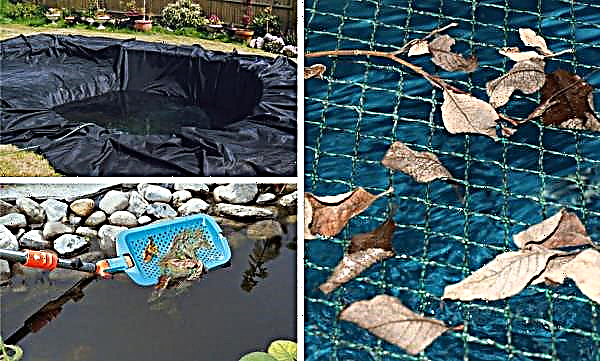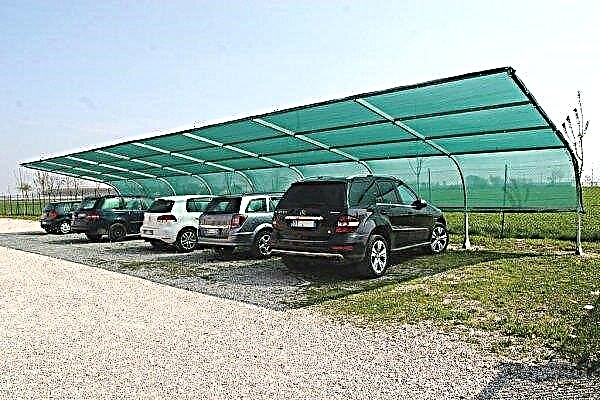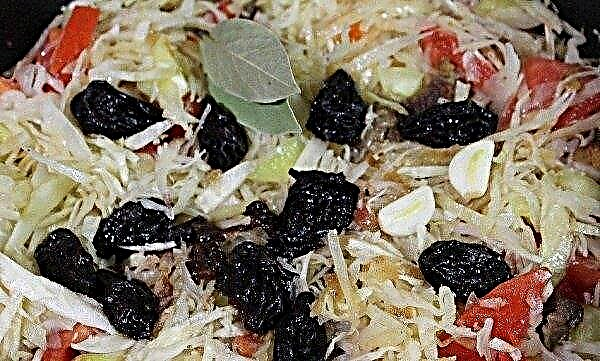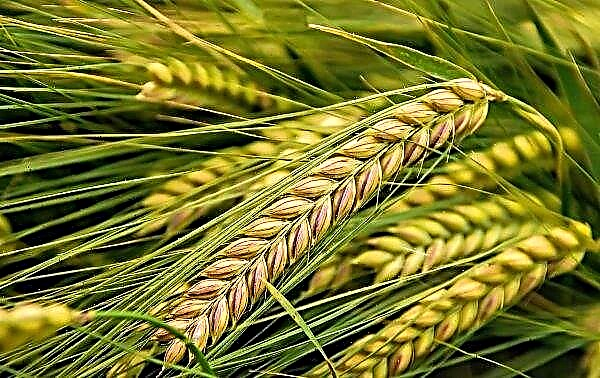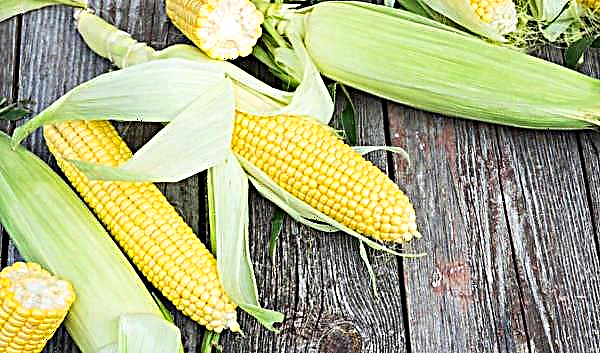Planting tomatoes on the site is one of the important activities of any summer resident, because along with cucumbers and peppers, these are the most common vegetables in the homestead. Today there are many interesting varieties of tomatoes, but almost all of them fall under the general rules of the planting process, the nuances of which will be discussed later.
How to plant tomatoes for seedlings
In order to grow seedlings that are strong and resistant to adverse conditions, it is very important to consider the optimal timing of sowing seeds and to properly prepare the substrate. It will also be useful to know the basic rules for caring for emerged plants, of course, in accordance with the requirements of the selected variety.
The timing
Early ripe and mid-ripening varieties of tomatoes are usually sown on seedlings in early March, placing boxes of tomatoes in a warm room with temperatures not lower than + 22–23 ° C during the day and + 17–18 ° C at night. In the first week after sowing, it is advisable to organize round-the-clock lighting. Transplantation into open ground is most often performed in early June or, in extreme cases, at the end of May, as soon as the probability of return frosts passes. However, in this matter it is very important to consider the selected variety of tomatoes.
Transplantation into open ground is most often performed in early June or, in extreme cases, at the end of May, as soon as the probability of return frosts passes. However, in this matter it is very important to consider the selected variety of tomatoes.
Priming
Tomatoes love nutritious soil, therefore, the substrate for sowing seeds should be appropriate. It is best to prepare the soil yourself, sifting humus through a sieve (product cells should not exceed 4-6 mm), turf soil and peat, taken in equal proportions. For preventive purposes, it is advisable to spill the finished mixture with a solution of potassium permanganate or calcine in the oven, which will help eliminate all pathogens and fungal spores.
Capacity for growing
You can sow seeds in any seedlings or separate plastic cups, but it is best to prepare small trays for this purpose, no more than 6-8 cm high. It is good if they have a rectangular shape, because it will be easier to determine at what distance to plant tomatoes . A slightly more costly, but at the same time quite effective way to germinate tomato seeds is to use peat tablets, with an already existing recess for each seed. If you believe the reviews, this method of planting tomatoes will help in growing seedlings of high-yielding hybrid varieties, which are characterized by increased demands on cultivation conditions. Depending on the selected variety, the seedling germination time varies within 4–20 days, and it does not matter which container you choose for planting.
If you believe the reviews, this method of planting tomatoes will help in growing seedlings of high-yielding hybrid varieties, which are characterized by increased demands on cultivation conditions. Depending on the selected variety, the seedling germination time varies within 4–20 days, and it does not matter which container you choose for planting.
Seed preparation
Preparing seed is no less important than processing and disinfecting the soil, especially when it comes to self-collected seeds.
Did you know? A simple test using table salt will help in choosing viable tomato seeds: 1 teaspoon should be diluted in a glass of water. salt, and then, pouring seeds into the container, stir them for 3 minutes. After this, the solution is left to infuse for another 10 minutes and the quality of the material is assessed by the emerged seeds: such seeds are not suitable for sowing.
This pre-landing phase consists of several important steps:
- culling of planting material, with the selection of only large and healthy-looking specimens;
- disinfecting suitable seeds using a weak potassium permanganate solution;
- soaking in a growth stimulator (for example, "Zircon"), which should accelerate the process of seed germination and approximate the time of planting in an open area (you can just clamp the seeds with cotton swabs moistened with the preparation).
Sowing seeds
Excessive density of seedlings that appear in the boxes threatens to stretch the seedlings and the possible development of fungal ailments, so the requirements of the planting scheme should be observed in any case. On average, at least 5–10 cm of free space should be left between adjacent seeds, deepening them by 0.5–2 cm deep into the soil. However, a tomato variety plays an important role in the calculation accuracy: one is suitable for placement closer to the soil surface, while others need a deeper hole in the soil layer.
Seedling Care
Immediately after sowing tomatoes, the boxes with them must be covered with a film cover and taken to a dry and warm place. As soon as the first sprouts appear under the film, containers with plants are moved to the windowsill or artificial lamps are placed above them so that the daylight hours are at least 12-14 hours. It is advisable to remove the film cover or glass at this stage.
In the first 5–6 days after sowing, it is desirable to maintain the air temperature in the room within + 22–23 ° C, and then gradually reduce the indicators to + 17–18 ° C. In sunny weather, short-term temperature rises of up to +25 ° C are permissible. Watering at this time should be moderate and better under the root of each young plant. Loosening the substrate for the first time can not be carried out, and after a week of growing seedlings, this procedure is performed once a week, using a toothpick.
Seedling hardening
Most often, seedlings begin to be hardened 2-3 weeks before the intended planting in open ground, so that at this point the plants are already accustomed to outdoor temperatures and possible wind effects. For the first time, tomatoes are brought to the balcony for only 2 hours, covering them from direct sunlight. After a week, the time of “walk” can be increased by another 2-3 hours, gradually bringing this value up to 6-8 hours a day. A few days before planting on the site, tomatoes should be outdoors all day.
Important! If after staying in the open air the leaves withered on the plants or you notice other signs of deterioration in their general condition, then it is better to postpone the procedure for a while, at least until the tomatoes are restored.
If it is not possible to take out boxes with seedlings outside, just place them in a cool room, covering with agrofibre for the night. Upon successful completion of the hardening procedure, a high amount of sugar is formed in the stem and leaves of plants, which positively affects the future harvest.
How to transplant tomatoes in open ground
Transplanting tomatoes into open soil, like sowing seeds for seedlings, has its own nuances. This applies not only to the process itself, but also to the choice of the most suitable time, with further observance of the rules for caring for young plants.
Video: secrets of planting tomato seedlings
Landing time
No matter how you like to plant tomatoes early on your plot, you can plant plants only after stabilization of the ambient temperature and complete retreat of night frosts. Insufficient heating of the air and the soil itself will adversely affect the growth and development of the crop, as a result of which the volume of the crop will be significantly reduced. The optimal average daily temperature for tomatoes is considered to be in the range + 15–22 ° C, with a possible increase in the daytime to +25 ° C or even slightly higher.
If you are not sure about the irrevocability of night frosts, then for the first time it will be useful to cover the beds with film. The ideal time for planting tomatoes in the central regions of the middle zone of Russia and Ukraine is considered to be the end of May or the beginning of June, but in the southern regions these dates may shift closer to the beginning of May. In the northern territories, tomatoes are planted in open ground in early or mid-June, when the soil temperature rises to about + 13-15 ° C.
Seat selection
The choice of a place for planting a crop plays an important role in the success of its cultivation. Tomatoes belong to light and heat-loving plants, therefore, the area under them should be appropriate. Wetlands with excessive humidity are best avoided, but the hills should be included in the list of territories under consideration. Having decided on the location of the garden, make sure that last year it did not grow “undesirable” crops for tomatoes: peppers, potatoes, eggplant or other solanaceous crops.
Did you know? The composition of tomatoes includes such a component as lycopene, which, together with the existing beta-carotene, perfectly protects the skin of a person from ultraviolet radiation and sunburn.
All of them are characterized by similar ailments, so it is likely that planted tomato bushes will soon get sick with fungal or infectious ailments. Tomatoes can be planted in the same place no earlier than 3-4 years later, and only some varieties can be grown on the same bed with a frequency of once every 2 years. For the spring planting, the selected site is prepared in the fall, digging and applying the appropriate nutrient compositions to the soil, for example, for 1 m² of soil, you can prepare a nutrient mixture of 7 kg of organic fertilizers, 40 g of superphosphates and 0.7 kg of lime. In the spring, the soil on the site is again well dug and fertilized with superphosphates and potassium compounds (not more than 20 g / 1 m²). Before the seedlings are planted, nitrogen-containing top dressing can be added to the soil and the soil treated with a solution of copper sulfate (this will reduce the likelihood of infection of the bushes with fungal ailments).
In the spring, the soil on the site is again well dug and fertilized with superphosphates and potassium compounds (not more than 20 g / 1 m²). Before the seedlings are planted, nitrogen-containing top dressing can be added to the soil and the soil treated with a solution of copper sulfate (this will reduce the likelihood of infection of the bushes with fungal ailments).
Planting Tomatoes
The distance between adjacent bushes and rows of planted plants directly affects the amount of yield of any crop, so it is useful for every gardener to know about the optimal pattern for planting tomatoes.
There are two possible options for marking beds:
- In the first case, the landing pattern traditional - 40 × 50 cm, i.e., between the holes you need to leave 40 cm of free space, and between the rows - 50 cm.
- On the double beds 2 rows of tomatoes are planted on a strip of 50 cm wide, placing them in a checkerboard pattern. The distance between such rows should be at least 80 cm.
You can also highlight the ribbon-nesting method of planting tomatoes, which is ideal for medium areas and a large number of seedlings. With this scheme, the entire available area is divided into irrigation furrows, with a gap of 100 cm between them. Tomato bushes are planted on both sides of such grooves, at a distance of 70 cm from each other. Between the planted rows of tomatoes in one groove should remain at least 40 cm of free space.
How to care for tomatoes
Caring for tomatoes involves performing all the same actions as caring for other garden crops: watering, fertilizing the soil, weeding and loosening it. True, almost any cultivar of this culture requires even pinching, with further tying of bushes, which will help to obtain a rich and high-quality crop. How to carry out these activities and what you need to know about the nuances of standard procedures for growing tomatoes - it will be useful to know each gardener.
Watering
Tomatoes can be attributed to hygrophilous plants, but this does not mean that they need to be filled with water. A dried up topsoil and slightly sagging leaves are considered a good indicator of moisture demand (this is especially noticeable during a drought).
Important! Once every few weeks, you can add a little ash to the water, which will be a good prevention of vertex rot. To prepare a working solution for 10 l of water, it is enough to take 50 g of sifted wood residues.
As for the requirements for the process of watering tomatoes, there are several:
- soil moisture should be carried out mainly in the evening, preferably a few hours before sunset;
- as a suitable liquid, it is desirable to use settled rainwater slightly warmed by the sun;
- irrigation regularity depends on weather conditions, but on average it is performed at least 1-2 times a week;
- from 3 to 5 liters of liquid can be consumed per bush, which depends on the moisture content of a particular tomato variety;
- plentiful watering is especially important during the formation of ovaries, which, without enough moisture, can crumble, and the crop will not be so plentiful;
- when choosing a method of watering, it is worth paying attention to the drip and underground options, since spraying water on the leaves of tomato bushes can lead to burns or the development of late blight.
 With sufficient moisture in the soil, tomatoes can easily tolerate overheating, evaporating the available liquid through the leaves. This process leads to their successful cooling, allowing them to withstand temperature increases in the environment up to +30 ° C or even more.
With sufficient moisture in the soil, tomatoes can easily tolerate overheating, evaporating the available liquid through the leaves. This process leads to their successful cooling, allowing them to withstand temperature increases in the environment up to +30 ° C or even more.Fertilizer application
The first feeding of planted tomatoes is carried out approximately 10 days after transplanting the plants into the open ground, using nitrate as a fertilizer (20 g per 1 bucket of water is sufficient). The application of this fertilizer is carried out shortly after watering, at the rate of 0.5 l of the finished working mixture per bush. The following dressing can be done 7-10 days after the first, in this case, using organic fertilizers, for example, diluted chicken droppings or mullein (0.5 l of fertilizer is diluted in 10 l of water).
Organics plants are watered strictly under the root, using no more than 0.5 l of fertilizer per plant. After top dressing, water the seedlings again so that the nutrients sink to the root system. In the absence of organic fertilizers, ready-made complex compounds can be used, applying them in the following sequence:
In the absence of organic fertilizers, ready-made complex compounds can be used, applying them in the following sequence:
- First feeding - 10-15 days after transplanting, using double superphosphate (25 g), potassium sulfate (20 g) and ammonium nitrate (8 g).
- Second feeding - during the formation of fruits, using a solution of 20 g of ammonium nitrate and 25 g of potassium sulfate.
- Third feeding - carried out 20-30 days after the previous one and involves the use of the same composition as in the previous case.
Stepson
Pasynkovka - a mandatory procedure for most tomatoes, providing for the removal of excess shoots from the bush. In fact, stepsons are competitors of the main stem in terms of nutrient intake, and despite the fact that they form the ovaries and even give fruits, it is better to remove them during flowering, otherwise it will not be possible to avoid thickening of plantings and chopping of the crop. Some varieties of tomatoes without the removal of stepsons are generally not able to develop normally and are often late with fruiting. You need to perform stepsoning only taking into account the type of tomatoes, since determinant, semi-determinant and indeterminate varieties are characterized by different requirements for the formation process. So, in the first case, tomato bushes are formed in 3-4 stems, in the second - in 2 stems, and in the latter - only one main trunk is left on the plant, removing all side shoots.
You need to perform stepsoning only taking into account the type of tomatoes, since determinant, semi-determinant and indeterminate varieties are characterized by different requirements for the formation process. So, in the first case, tomato bushes are formed in 3-4 stems, in the second - in 2 stems, and in the latter - only one main trunk is left on the plant, removing all side shoots.
Important! It is advisable to check tomatoes for the presence of new shoots at least 1-2 times a week so that the main shoot and the fruits formed on it do not suffer from a lack of nutrients.
The method of removing excess shoots largely depends on the thickness of the stepson. If he appeared recently and has not yet entered active growth, they simply break him out in the direction to the side, in extreme cases, leaving only a small stump. Dense and large shoots are cut with garden shears, previously disinfected with a solution of potassium permanganate (it is advisable to wipe the blades after each plant).
Soil care
Soil care when growing tomatoes involves loosening, hilling, mulching and removing weeds.Land cultivation should be carried out shortly after rain or watering, with the simultaneous removal of weeds. After completion of work, the soil around the bushes can be hardened and mulched with sawdust, which will give the plants better stability and will retain moisture for a long time at the root system. If tomatoes need additional top dressing, it can be done using a mixture of rotted manure and peat as mulch.
After completion of work, the soil around the bushes can be hardened and mulched with sawdust, which will give the plants better stability and will retain moisture for a long time at the root system. If tomatoes need additional top dressing, it can be done using a mixture of rotted manure and peat as mulch.
Tying bushes
Most varietal variations of tomatoes are medium- or tall bushes, with fairly large tomatoes on the hands. Even at the stage of fruit formation, their mass already causes the shoots to lean to the side, and the larger they become, the greater the likelihood of a stem breaking. To prevent this from happening, special supports are installed next to the bushes, to which plants are attached with soft ropes. One of the options for such support is wooden stakes installed at a distance of 5-10 cm from the tomato trunk and recessed into the soil by at least 30 cm.
When tying to such a support, you can use the usual rope, from which the knot in the form of an eight is made. As the bush grows, the same garter should be performed in the upper part, be sure to control the tension. Over time, the lower fasteners can crash into the trunk of the bush, so you have to periodically weaken them. Alternatively, you can surround the tomato bush with a metal mesh with large cells. It is very convenient to attach ropes to it, and there is still enough space for additional fixation.
What can be planted after tomatoes
Compliance with crop rotation rules on the site is the key to a good harvest of various types of crops, so in order to get tasty and large tomatoes every year, you will have to constantly change the place of their cultivation, at least at least once every 2-3 years.
Did you know? Mustard seeds contain a lot of useful substances, among which it is worth noting volatile and antibacterial components that act as a natural preservative for better preservation of food products. When cooking meat, a small amount of mustard powder is sufficient to prevent the leakage of its juice.
While tomatoes grow elsewhere, in the same area you can plant:
- cabbage;
- cucumbers
- zucchini;
- pumpkin;
- squash;
- beans;
- peas;
- garlic;
- salad;
- beets;
- carrot;
- parsley;
- dill;
- celery.

Tips for planting tomatoes
So that the planted tomato bushes take root well and soon yield a plentiful crop, it is worth knowing about some recommendations for their cultivation:
- In the autumn period, the soil must be fed (it can be phosphorus or potassium compounds) and dug, saturating with a sufficient amount of oxygen.
- If for some reason the autumn top dressing was not performed, you will have to fertilize the soil in early spring, using 200 g of saltpeter per 10 m² of area for this.
- If possible, it is advisable to plant plants in the second half of the day, because during the night the tomatoes will get stronger and take root better.
- To facilitate the process of extracting bushes from the seedling tank, the soil is shed with warm water about an hour before the intended transplant.
- It is better to extract seedlings together with a land lump from the previous place of growth, which is much less harmful to the root system of plants.
- When using organic fertilizers laid out in holes, be sure to sprinkle them with earth so as not to burn the delicate roots of seedlings.
- After planting the tomatoes, be sure to water them and, if possible, mulch the soil around the bush.
- When choosing a planting scheme, one cannot ignore the requirements of the selected variety: one tomato has enough free space of 40 cm, others require a distance of 60 cm or even more.
 Despite all these nuances, there are no serious problems with planting and further care for tomatoes, so even a beginner will calmly cope with this task. The main thing is to choose the right variety of culture, determine the timing and place of planting.
Despite all these nuances, there are no serious problems with planting and further care for tomatoes, so even a beginner will calmly cope with this task. The main thing is to choose the right variety of culture, determine the timing and place of planting.

